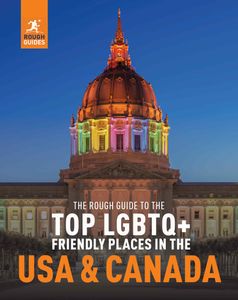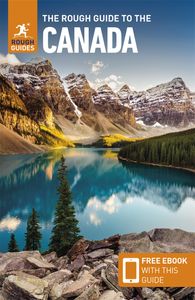Amethysts
Amethyst, a purple-coloured variety of quartz, was first discovered near the shores of Lake Superior between the Ouimet Canyon and Thunder Bay in the middle of the nineteenth century. It is still mined hereabouts and specific deposits have been turned into well-signposted tourist attractions; Hwy-17 whizzes past a string of them. One of the best is Blue Points Amethyst Mine (mid-May to mid-Oct daily 9.30am–4pm), 58km east of Thunder Bay. Tours of the open-pit mine are free, but you can pick up a bucket and digging tool to gather as many lumps of rock as you want, and pay a minimal amount for your booty on the way out. Amethysts can be polished with baking soda.
Lake Superior Provincial Park
Heading north from Sault Ste Marie on Hwy-17, it’s about 130km to the southern perimeter of Lake Superior Provincial Park, which offers ready access to Lake Superior’s granite shoreline and its immediate hinterland. Autumn is the best time to visit, when the blackflies have abated and the forests of sugar maples and yellow birch flash with colour, but the scenery and wildlife are enthralling year-round. Moose, chipmunk and beaver are the most common, sharing their habitat with the more elusive white-tailed deer, woodland caribou, coyote, timber wolf and black bear, as well as myriad migratory and resident birds.
The Coastal Trail
The finest of the park’s many trails, the Coastal Trail begins some 140km from Sault Ste Marie at Sinclair Cove and runs north to Chalfant Cove. It comprises a challenging 48km-long route of high cliffs, sand and cobbled beaches, sheltered coves and exposed granite ledges. There are numerous designated backcountry campsites on the trail and the burnt-out fires on the beaches indicate where most people choose to pitch. The entire trek takes about five to seven days but access points enable you to do shorter sections; the southern part of the trail is not as demanding, with fewer climbs and easier going on sand rather than cobbled beach. Maps and trail guides are available at the park office and the visitor centre.
Pukaskwa National Park
Beyond White River, Hwy-17 turns west, heading back towards the Lake Superior shoreline. After about 85km, just short of the little lakeshore town of Marathon, Hwy-17 clips past Hwy-627, the 15km-long side road that provides the only access to Pukaskwa National Park, a large chunk of hilly boreal forest interspersed by muskeg and loch that fills out an enormous headland with a stunningly wild and remote coastline. Apart from a scattering of facilities beside the road at Hattie Cove, the park is untrammelled wilderness, attracting a mixed bag of canoeists and backcountry campers. At Hattie Cove, most visitors embark on the Coastal Hiking Trail, which travels 60km south through the boreal forest and over the ridges and cliffs of the Canadian Shield. It is not an easy hike, but it is magnificent and there are regular backcountry campsites on the way. In the summer, McCuaig Marine Services (t 807 229 0193) offers a water taxi service to Swallow River, so you can just hike one-way back to Hattie Cove. Far less arduous are the short trails departing from or near the visitor centre. Of these, the rocky Southern Headland Trail (2.2km) offers superb views over Lake Superior before hitting Horseshoe Beach, where you can continue on the Beach Trail (1.5km) leading you back to the campsite.

















